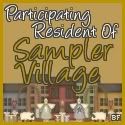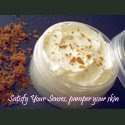DefinitionThe common cold is a viral infection of the upper
respiratory system, which includes the nose, throat, sinuses,
eustachian tubes, trachea, larynx, and bronchial
tubes. Although more than 200 different viruses can
cause a cold, 30–50% are caused by a group known as
rhinoviruses. Almost all colds clear up in less than two
weeks without complications.
DescriptionColds, sometimes called rhinovirus or coronavirus
infections, are the most common illness to strike any
part of the body. It is estimated that the average person
has more than 50 colds during a lifetime. Anyone can get
a cold, although preschool and grade school children
catch them more frequently than adolescents and adults.
Repeated exposure to viruses causing colds creates partial
immunity.
Although most colds resolve on their own without
complications, they are a leading cause of visits to the doctor
and of time lost from work and school. Treating symptoms
of the common cold has given rise to a multimillion
dollar industry in over-the-counter medications, yet none of
these medications are actually anti-viral to the rhinovirus.
Cold season in the United States begins in early autumn
and extends through early spring. Although it is not
true that getting wet or being in a draft causes a cold (a
person has to come in contact with the virus to catch a
cold), certain conditions may lead to increased susceptibility.
These include:
• fatigue and overwork
• emotional stress
• poor nutrition
• smoking
• inadequate rest or sleep
• living or working in crowded conditions
Colds make the upper respiratory system less resistant
to secondary bacterial infection. Secondary bacterial
infection may lead to a number of other complications,
including middle ear infection, bronchitis, pneumonia,
sinus infection, or strep throat. People with chronic
lung disease, asthma, diabetes, or a weakened immune
system are more likely to develop these complications.
Causes & symptoms
Colds are caused by more than 200 different viruses.
The most common groups include rhinoviruses and coronaviruses.
Different groups of viruses are more infectious
at different seasons of the year, but knowing the exact
virus causing the cold is not important in treatment.
People with colds are contagious during the first two
to four days of the onset of symptoms. Colds pass from
person to person in several ways. When an infected person
coughs, sneezes, or speaks, tiny fluid droplets containing
the virus are expelled. If these are breathed in by
other people, the virus may establish itself in their noses
and airways.
Colds may also be passed through direct contact.
For example, if a person with a cold touches his runny
nose or watery eyes, then shakes hands with another person,
some of the virus is transferred to the uninfected
person. If that person then touches his mouth, nose, or
eyes, the virus is transferred to an environment where it
can reproduce and cause a cold.
Finally, cold viruses can be spread through inanimate
objects (door knobs, telephones, toys) that become
contaminated with the virus. This is a common method
of transmission in child care centers. Another vector of
transmission is air travel, due to closed air circulation in
buildings.
Once acquired, the cold virus attaches itself to the
lining of the nasal passages and sinuses. This causes the
infected cells to release a chemical called histamine.
Histamine increases the blood flow to the infected cells,
causing swelling, congestion, and increased mucus production.
Within one to three days, the infected person begins
to show cold symptoms.
The first cold symptoms are usually a tickle in the
throat, runny nose, and sneezing. The initial discharge
from the nose is clear and thin. Later, it may change to a
thick yellow or greenish discharge. Most adults do not
develop a fever when they catch a cold. Young children
may develop a low fever of up to 102°F (38.9°C).
Other symptoms of a cold include coughing, sneezing,
nasal congestion, headache, muscle ache, chills,
sore throat, hoarseness, watery eyes, fatigue, dull hearing
and blocked eustachian tube (a danger when flying),
and lack of appetite. The cough that accompanies a cold
is usually intermittent and dry.
Most people begin to feel better four to five days
after their cold symptoms become noticeable. All symptoms
are generally gone within 10 days, except for a dry
cough that may linger for up to three weeks.
Colds make people more susceptible to secondary
bacterial infections such as strep throat, middle ear infections,
and sinus infections. A person should seek a
doctor’s consultation if the cold does not begin to improve
within a week. If an individual experiences chest
pain, fever for more than a few days, difficulty breathing,
bluish lips or fingernails, a cough that brings up
greenish-yellow or grayish sputum, skin rash, swollen
glands, or whitish spots on the tonsils or throat, then that
person should also consult a doctor to see if they have
acquired a secondary bacterial infection that needs to be
treated with an antibiotic.
People who have emphysema, chronic lung disease,
diabetes, or a weakened immune system—either from
diseases such as AIDS or leukemia, or as the result of
medications, (corticosteroids, chemotherapy drugs)—
should consult their doctor if they get a cold. People with
these health problems are more likely to get a secondary
infection.
TreatmentThe patient should drink plenty of fluids and eat nutritious
foods. In fact, the old adage, “Feed a cold, starve
a fever” was scientifically proven true in 2002. Dutch
scientists found that cold-fighting immune responses
rose after consuming a full meal while fasting increased
those that combat most fevers. Chicken soup with ginger,
scallions, and rice noodles is nutritious and has
properties that help the patient to recover. Rest, to allow
the body to fight infection, is very important. Gargling
with saltwater (half teaspoon salt in one cup of water)
helps to soothe a sore throat. A vaporizer also will make
the patient feel more comfortable. Rubbing petroleum
jelly or some other lubricant under the nose will prevent
irritation from frequent nose blowing. For babies, nasal
mucus should be suctioned gently with an infant nasal
aspirator. It may be necessary to soften the mucus first
with a few drops of salt water.
Herbals
Herbals can be taken to stimulate the immune system,
for antiviral activity, and to relieve symptoms. The
following herbs are used to treat colds:
• Ginger (Zingiber officinale) reduces fever and pain, has
a sedative effect, settles the stomach, and suppresses
cough.
• Forsythia (Forsythia suspensa) fruit can be taken as a
tea for its anti-inflammatory, fever reducing, and antimicrobial
properties.
• Honeysuckle (Lonicera japonica) flower can be taken
as a tea for its anti-inflammatory, fever reducing, and
antimicrobial properties.
• Aniseed (Pimpinella anisum) can be added to tea to
expel phlegm, induce sweating, ease nausea, and ease
stomach gas.
• Slippery elm powdered bark (Ulmus fulva) can be
taken as a tea or slurry or capsules to soothe sore
throat, to ease cough, and to thin mucous.
• Echinacea (Echinacea purpurea or augustifolia) relieved
cold symptoms in clinical studies. The usual
dosage is 500 mg of crude powdered root or plant
thrice on the first day, then 250 mg four times daily
thereafter. This may also be taken as a tincture.
• Goldenseal (Hydrastis canadensis) has fever reducing,
antibacterial, anti-inflammatory, and antitussive properties.
The usual dose is 125 mg three to four times daily.
Goldenseal should not be taken for more than one week.
Goldenseal may also be prepared as a tincture.
• Astragalus (Astragalus membranaceus) boosts the immune
system and improves the body’s response to
stress. The common dose is 250 mg of extract four
times daily.
• Cordyceps (Cordyceps sinensis) modulates and boosts
the immune system and improves respiration. The
usual dose is 500 mg two to three times daily.
• Elder (Sambucus) has antiviral activity, increases
sweating, decreases inflammation, and decreases nasal
discharge. The usual dose is 500 mg of extract thrice
daily.
• Stinging nettle (Urtica dioica) has antihistamine and
anti-inflammatory properties. The common dose is 300
mg four times daily.
• Schisandra (Schisandra chinensis) helps the body fight
disease and increases endurance.
• Grape (Vitis vinifera) seed extract has antihistamine
and anti-inflammatory properties. The usual dose is 50
mg three times daily.
• Eucalyptus (Eucalyptus globulus) or peppermint
(Mentha piperita) essential oils added to a steam vaporizer
may help clear chest and nasal congestion and
disinfect room air.
• Boneset infusion (Eupatroium perfoliatum) relieves
aches and fever.
• Yarrow (Achillea millefolium) is a diaphoretic.
• Supplemental larch from the inner bark of the western
larch tree has been shown in some clinical trials to fight
persistent colds and ear aches.



























































